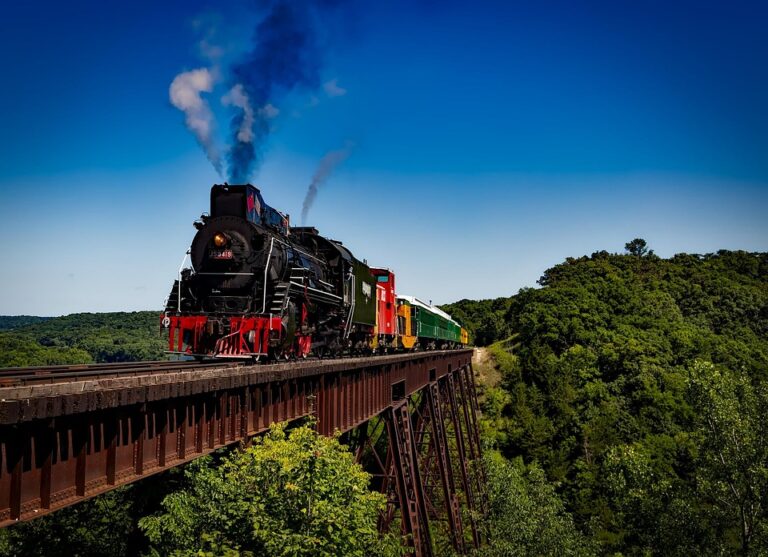Historical Routes: Discovering the Stories Behind Iconic Train Lines
Train travel has long been a captivating mode of transportation, offering not only the thrill of transportation but also a journey through the annals of history. As we embark on the exploration of iconic train lines, we will uncover the intriguing stories that shaped these routes, revealing the cultural and historical significance that underscores each rail.
The Allure of Train Travel
A Journey Through Time
When pondering train travel, one often imagines not just the movement from point A to B, but the myriad of experiences along the way. Trains have connected nations, cultures, and communities, becoming an essential thread in the fabric of history. A fascinating statistic from the Association of American Railroads indicates that freight rail contributes approximately $274 billion to the U.S. economy annually, emphasizing just how vital railways remain.
An Environmental Choice
In today’s world focused heavily on sustainability, train travel shines as an eco-friendly alternative. According to a 2021 report from the International Energy Agency, trains are on average four times more energy-efficient than cars and 17 times more efficient than airplanes, making them an increasingly viable option for environmentally conscious travelers.
Iconic Train Lines and Their Stories
1. The Transcontinental Railroad
Spanning across the United States, the Transcontinental Railroad was completed in 1869 and drastically altered the American landscape. This monumental feat of engineering not only facilitated trade and migration but also significantly impacted the economy. Imagine the vast Nebraska plains and the Sierra Nevada mountains seen from the window of a moving train—the awe-inspiring views provided a window into the nation’s burgeoning frontier.
Example: The completion of this railroad reduced travel time from coast to coast from several months to just a week, allowing more opportunities for people and goods to flourish across the country.
2. The Orient Express
Perhaps one of the most luxurious and exotic routes, the Orient Express has captured the imaginations of many since its inaugural journey in 1883. Stretching from Paris to Istanbul, it became an emblem of elegance and adventure, frequented by the elite and prominent figures of society. The train not only offered lavish accommodations but also became the backdrop for stories and mysteries—likely epitomized in Agatha Christie’s famous novel.
Visual Suggestion: An image of the Orient Express can illustrate its luxurious interiors, showcasing the grandeur of train travel (Alt Text: Luxurious interiors of the Orient Express train).
3. The Glacier Express
For those captivated by breathtaking scenery, the Glacier Express in Switzerland provides a remarkable viewing experience. Dubbed the "slowest express train in the world," it spans scenic routes from Zermatt to St. Moritz, traveling over 291 bridges and through 91 tunnels. Its leisurely pace allows passengers to absorb the stunning landscapes of the Swiss Alps, making it a favorite choice for tourists seeking a true alpine experience.
Statistical Insight: The Glacier Express is so popular that it reported over 200,000 passengers annually, indicative of the increasing trend in scenic train travel.
Visual Suggestion: A panoramic view from the Glacier Express train highlighting the stunning landscapes (Alt Text: Scenic landscape view from the Glacier Express train).
The Future of Train Travel
As we look at the future of train travel, we can consider the revival of rail systems worldwide, characterized by innovations such as high-speed trains and sustainable energy initiatives. Countries like Japan have set the gold standard for high-speed rail with their Shinkansen, which travels at speeds of up to 200 miles per hour, connecting major cities rapidly while maintaining a high level of efficiency.
The Rebirth of Railways in the U.S.
Following years of decline, rail travel in the United States is witnessing a renaissance, with initiatives to modernize existing routes and introduce new services. This revival not only preserves critical infrastructure but also signals a major shift towards sustainable travel options, aligning with global trends favoring eco-friendly alternatives.
Conclusion: Riding the Rails of History
Train travel is much more than a mode of transportation; it’s an immersive journey through history that connects people and places in a uniquely profound way. Each route tells a story—some of conquest, others of luxury, but all filled with the ambiance of adventure. As we continue to explore iconic train lines across the globe, we uncover the narratives that have defined our interaction with the world.
For those interested in learning more about iconic transport methods, check out related articles on buzzo.live. Here are a couple of recommendations:
For external references, consider reading the latest rail travel trends on the International Railway Journal or recent surveys and statistics from the Federal Railroad Administration.
Embrace the thrill of train travel, and let the stories of these historic routes inspire your next adventure!


